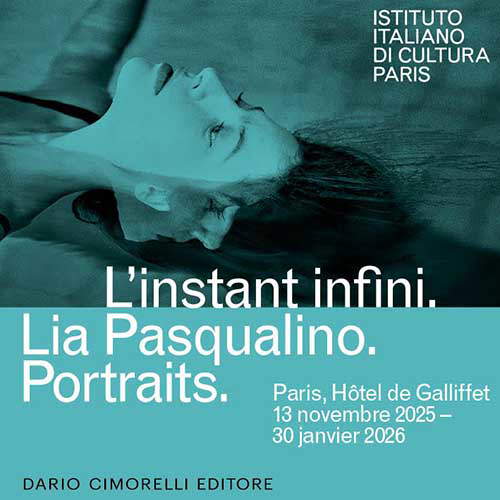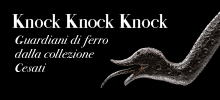
The Devil's Bridge over the Serchio River: history and legend of a medieval engineering masterpiece
The Magdalene Bridge, known as the Devil's Bridge, is one of the most fascinating symbols of the Middle Serchio Valley and all of Tuscany. Amidst mysteries and legends, its bold shape has enchanted travelers for centuries, until the recent restoration with which a major conservation work was done. All its history.
By Redazione | 24/09/2025 19:36
There is no guidebook of the Garfagnana and the Middle Serchio Valley that avoids mentioning one of its most recognized symbols, the Ponte della Maddalena, known to all as the Devil's Bridge, which has always intrigued travelers passing through this area of the Province of Lucca, at the beginning of the Middle Valley, on the state road, the 12 Abetone del Brennero, leading toward Barga and the Garfagnana. Descriptions of this bizarre bridge located near Borgo a Mozzano, on the outskirts of Lucca, abound since the travel literature of the nineteenth century: awe-inspiring are its hump-backed, asymmetrical shape, its large lopsided arch near the bank of the Serchio River and the other four smaller arches, one crossed by the railway on the left bank and the others near the right bank, and the legends told about its construction.
As early as 1581, Michel de Montaigne mentioned the bridge in his Journal de Voyage: "La plus part du chemin fut par un chemin bas, assés aisé entre des montaignes, quasi toutes fort ombragées & habitables partout le long de la riviere de Cerchio. Nous passames plusieurs villages & deus fort bourgs Reci & Borgo, & au-deça ladicte riviere que nous avions à notre mein droite, sur un pont de hautur inusitée, ambrassant d'un surarceau une grande largeur de ladicte riviere, & de cette façon de pons nous en vismes trois ou quarre" ("Most of the route was on a low, fairly easy path through the mountains, almost all of which were very shady and habitable everywhere along the Serchio River. We passed several villages and two very small towns, Decimo and Borgo, and over the said river which we had on our right, over a bridge of unusual height, which crosses with an arch a great width of the said river, and in this way we saw three or four.") In 1880, one of Italy's first female travel journalists, Aurelia Folliero De Luna, in her travel book Lagunes, monti e caverne, described the Ponte del Diavolo as follows: "It is a bizarre form of bridge, with five unequal arches: a most daring curve forms a sharp arch over the Serchio and joins the two banks. 'What is that bridge?", I asked my coachman. 'The devil's bridge, Madam. 'As of the devil, why that name?' 'Because he made it in one night.... '. And seeing me smile, he added, 'They say!'" The tale of legend followed, due to the unique shape of this bridge.
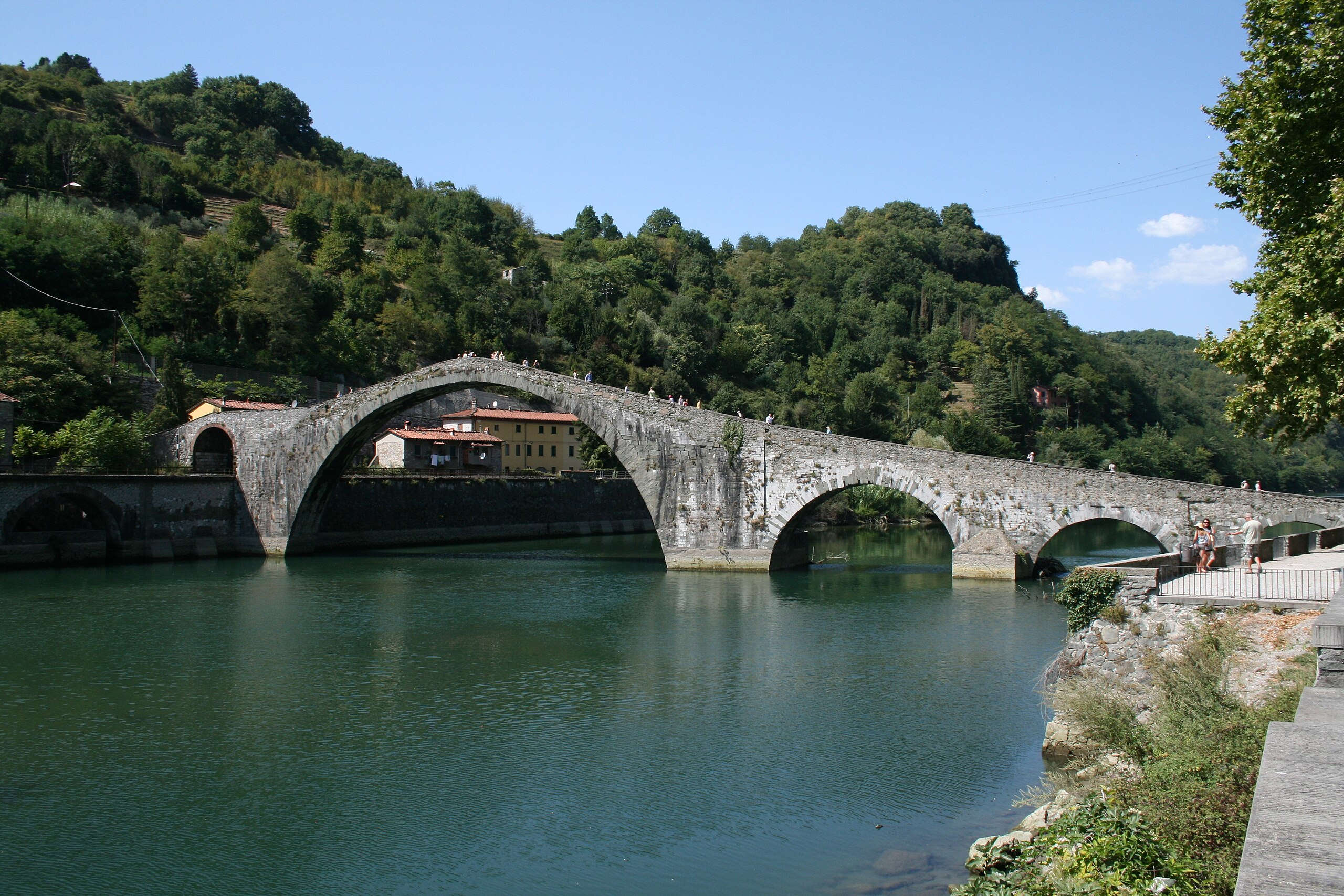
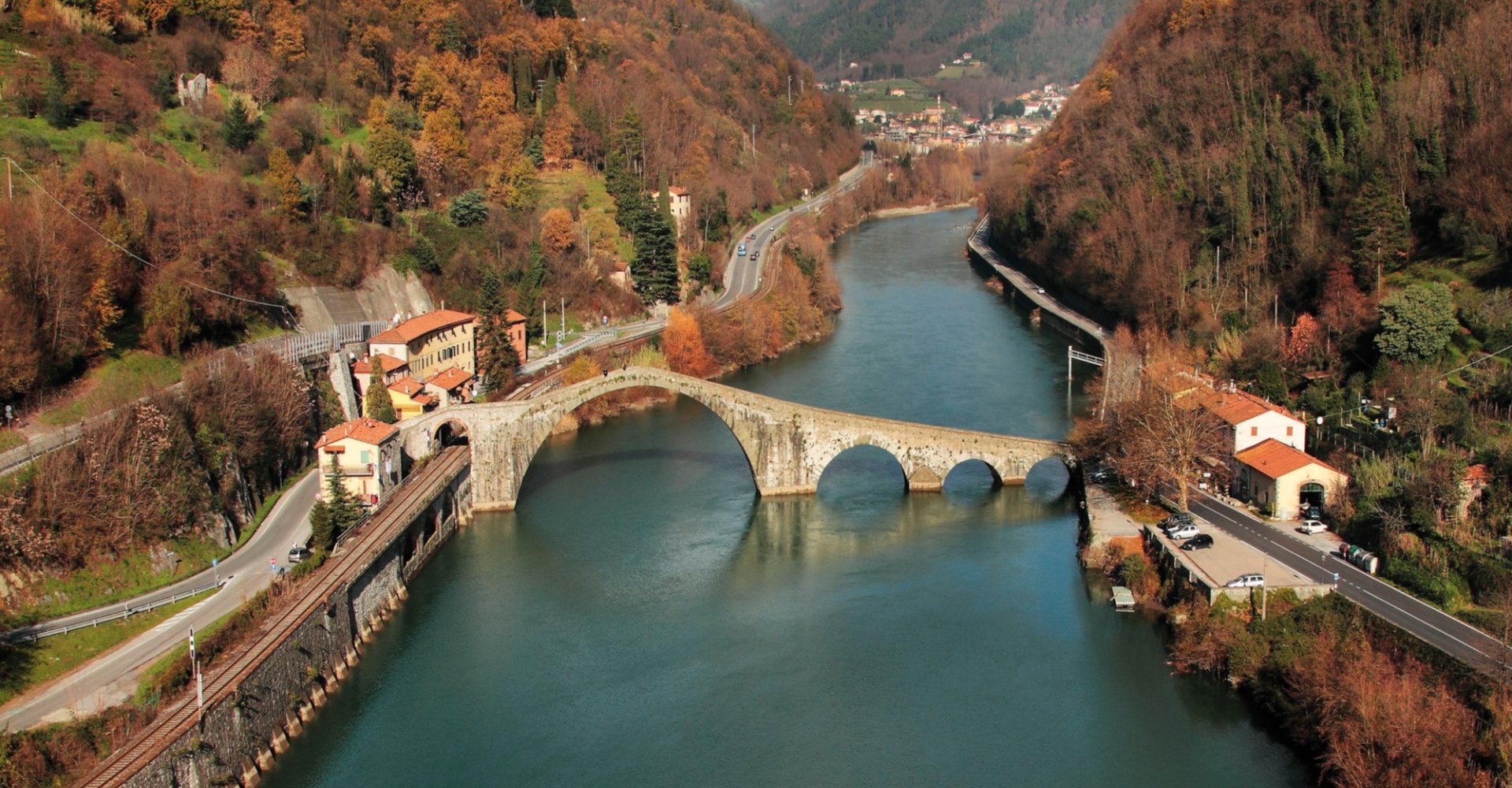
Popular tradition attributes the construction of the bridge precisely to the devil himself: over the centuries an engineering feat considered to be on the edge of the possible has always been justified in this way. The most widespread version of the legend has it that the master builder Aldebrandino, who was in charge of the construction, found himself in serious difficulty because of the continuous and raging floods of the river, and realized that he would not be able to complete the work within the time limit. In desperation, he muttered aloud that only the devil's help would enable him to overcome the river. At that point, Satan appeared to him in person and offered him a deal: Aldebrandino would complete the construction in a single night, and the devil would guarantee that the bridge would last for centuries, provided he obtained the soul of the first living being to cross it. The master builder agreed, but soon after the work was completed, he repented and turned to the village priest for help. Together, they devised a cunning stratagem: keep the pact, but deceive the Evil One. The next morning, the master builder lured a stray dog onto the bridge with a piece of bread or flatbread (or according to other versions, a pig, and according to a further variant of the legend, Aldebrandino supposedly did it all by himself: he thought he would sacrifice himself by passing over the bridge first, before changing his mind upon noticing the dog that happened to be passing by), making him pass first. The Devil, taken by surprise and enraged by his mockery, dissolved in a cloud of sulfur or, according to other accounts, threw himself into the waters of the Serchio River screaming and then disappearing forever. Some local legends report that the soul of the dog, sometimes identified as a white Maremma shepherd, appears on the bridge on autumn nights, or that his petrified body lies at the bottom of the river. Another secondary legend associates the bridge with the story of the Lucchese noblewoman Lucida Mansi, who, in exchange for thirty years of eternal youth, agreed to surrender her soul to Lucifer, who picked it up on the highest point of the bridge and then threw it into the Serchio River.
Legends aside, the bridge is an admirable masterpiece of medieval engineering. Its architecture is defined by its asymmetry, with the major arch positioned in the center, reaching a remarkable height of about 18 meters and a maximum span of 37.8 meters. It is precisely this convex, almost cusp-like structure that has always aroused wonder, especially in past eras, contributing to the belief that its construction could not have been the work of humans alone. Add to this the fact that it was a well-known infrastructure because the need to connect the two banks of the Serchio River was essential for the merchants, pilgrims and adventurers who passed through what was an important road artery since ancient times. The complexity of building on a river as usually raging as the Serchio, and which probably also required detour of the waterway, fueled the stories that justified its unusual architecture. Although its present slender appearance is still impressive, in the past the profile must have been even sharper (there are 16th-century engravings attesting to this), before the construction of a dam after World War II raised the water level of the Serchio River in its vicinity.
In any case, the exact origins of the bridge still remain shrouded in mystery, with few certain historical records documenting the precise year of its construction. The foundations of the structure are dated, according to some hypotheses, to the 11th century, perhaps at the behest of Matilda of Canossa, the powerful lady who also exerted great influence on Garfagnana. Matilda is mentioned in the biography of Castruccio Castracani compiled by Nicolao Tegrimi as the alleged patron of the structure. However, there is no certain news about this. Instead, we know with certainty that the current appearance of the bridge is largely due to the renovations promoted by Castruccio Castracani, a leader of Lucca, in the early 14th century, precisely between 1324 and 1327. It is considered likely that the construction of the bridge took place at separate times and at the hands of different builders. The bridge was also mentioned by Giovanni Sercambi in a 14th-century novella. In the 16th century, this important infrastructure took on the name "Magdalene Bridge," the official name it still retains today, in reference to an Oratory dedicated to the Saint that stood near the structure on the left bank of the river.
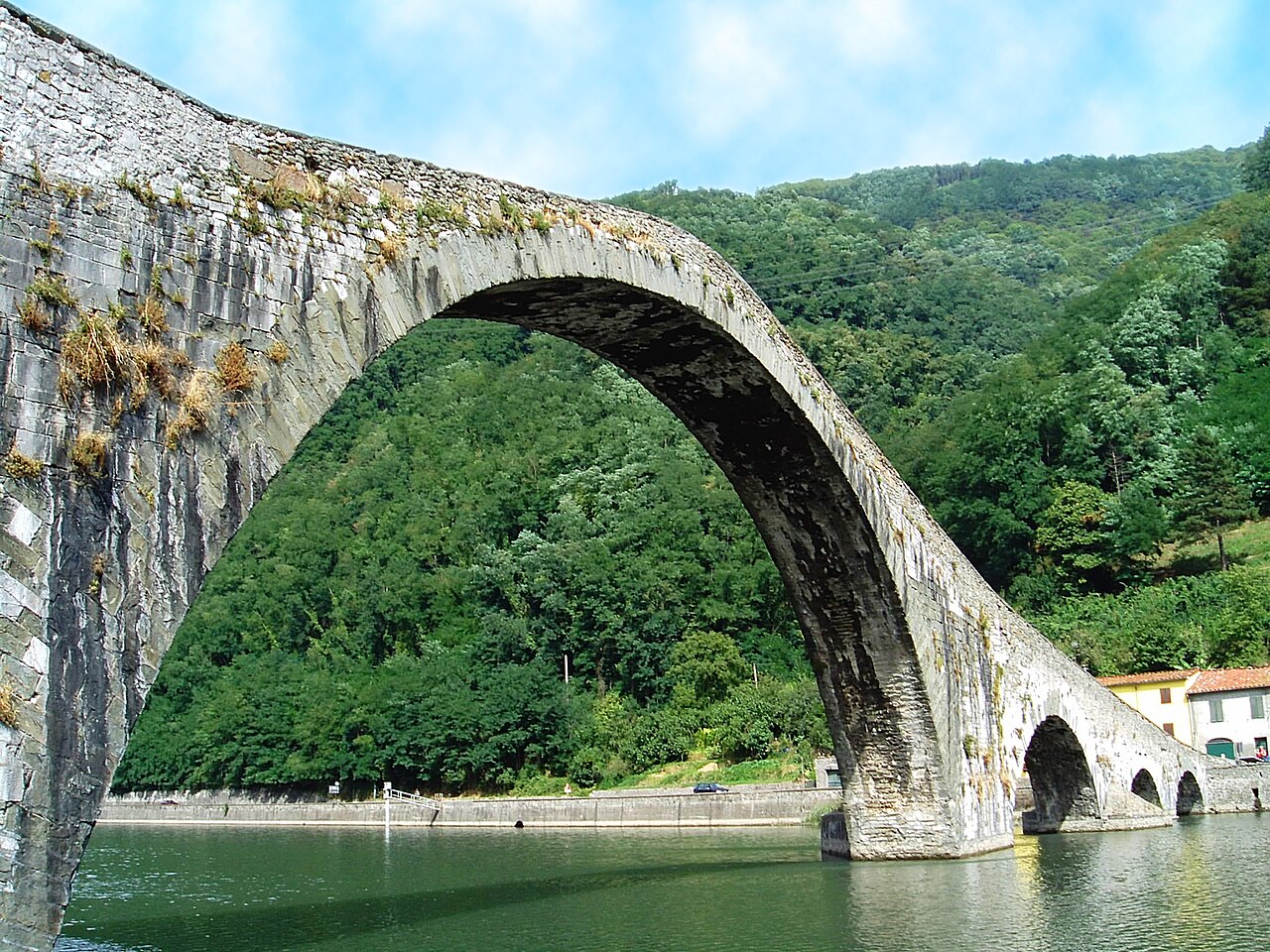

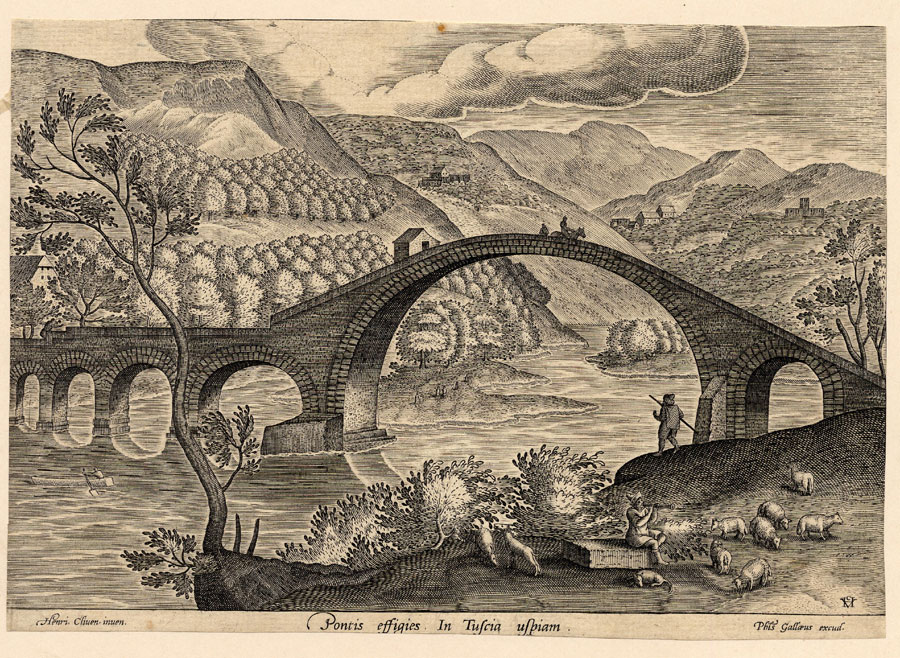

Over the centuries, the structure has undergone modifications and damage. As early as 1670, the General Council of the Republic of Lucca issued a decree prohibiting the passage of "logs" and millstones to preserve the integrity of the bridge. The first significant alteration occurred in 1836, due to a violent flood of the Serchio River that caused severe damage. Another drastic and "heavy" modification to the original architecture occurred in the early twentieth century, when it was necessary to heavily modify one of the arches to allow for the passage of the Lucca-Aulla railway. This decision was controversial and was approved by the city council in 1898, despite the existence of an alternative project to pass the railroad on the opposite bank.
The bridge also survived wartime events. During World War II, although it was undermined by German troops retreating to the northern Gothic Line, it was not blown up and was saved. Its resilience was crucial to the Allies, who used it to transport materials and not far away built a temporary military bridge, essential after other structures were destroyed. For several years after the conflict, it was also the only available crossing over the Serchio River at Borgo a Mozzano.
The Magdalene Bridge is now recognized as an asset of cultural interest under the Cultural Heritage and Landscape Code, and is owned by the Municipality of Borgo a Mozzano. Given its historical and architectural importance, the structure has recently undergone significant maintenance and restoration, promoted also through initiatives such as Art Bonus. The restoration and redevelopment project became necessary because of widespread problems that had developed in the absence of maintenance work. Among the most pressing priorities were the elimination of weeds and conservation work on the structure (removal of incongruent mortars and portions, replaced with appropriate materials, restoration of missing parts and subsequent grouting, cleaning of stones, removal of stains and crusts). A crucial aspect of the restoration was to address water infiltration from the walkway, a problem that threatened to compromise the static efficiency of the entire work. In this context, consideration was given to applying waterproofing treatments and creating discrete louvers to allow water to drain properly, preventing stagnation and run-off along the masonry walls. The total cost of the conservative restoration, completed in 2020, and the upgrading of the surrounding areas was 200,000 euros: about half of this sum took advantage of the Art Bonus mechanism, with disbursements coming from contributions from individuals, businesses and, in large part, from the Fondazione Cassa di Risparmio di Lucca. Today, the Magdalene Bridge continues to be a key landmark, not only as a medieval architectural masterpiece, but also as a gateway to the Serchio Valley. The work stands the test of time, uniting the past and present of the community of Borgo a Mozzano and all of Tuscany.


